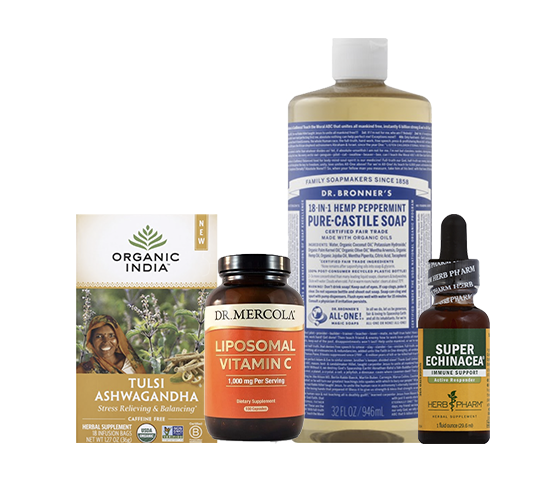Your Regenerative Agriculture Crash Course
Your Regenerative Agriculture Crash Course
Sometimes you hear a statistic and think, “that doesn’t sound like it could be true.” But, as the world shifted to industrial farming methods, in the last century, we have depleted HALF the world’s topsoil.
And some scientists predict that if we don’t change something soon, the earth will become critically short of fertile land within 60 years.
But all hope isn’t lost – there are things we can all do to help create a positive impact and change here.
Simply improving how food is produced can go a long way toward the solution. That’s where Regenerative Agriculture comes in: farmers and scientists alike are finding that improving soil health has lasting impacts on every level of the ecosystem and that sustainable farming might be one of the best ways to combat soil erosion, biodiversity loss, and even climate change.
Which is why regenerative agriculture is disrupting the industrial food system and improving soil fertility, one farm field at a time.
Let’s talk more about regenerative agriculture, and how it is different than other sustainable farming techniques.
What is Regenerative Agriculture?
- Sometimes referred to as carbon farming, regenerative agriculture is a farming philosophy that focuses on restoring soil health and sequestering carbon dioxide from the atmosphere.
- ‘Regenerative’ refers to any process that naturally improves or restores the system that it’s part of, rather than harming it. The phrase ‘regenerative agriculture’ was first used by the American farming nonprofit the Rodale Institute in 1980 as a way to define their soil health-focused sustainable farming practices.
- Regenerative farming works to rebuild depleted soil by restoring its nutrient levels so that it can grow better crops. Regenerative farmers also strive to reduce erosion, improve their soil’s capacity to hold onto water, promote biodiversity, and produce more food in smaller spaces.
- The principles of regenerative agriculture are designed to create a system of mutually beneficial relationships where outputs become inputs, waste is minimized, and resources are reused as much as possible.
How Does Regenerative Agriculture Work?
When farmland becomes overused or eroded, it loses most of its carbon content. To combat this, regenerative agriculture restores soil to its naturally robust, carbon-rich state. One fundamental principle is that land should be tilled as little as possible, which allows it to regain fertility through biological methods like cover crops, compost, and managed animal grazing.
Adding organic material to farmland has other benefits, as this healthy soil becomes a carbon sink. This means that the ground holds more carbon than it releases, leading to a net loss of carbon dioxide in the atmosphere. These low-tech, low-cost techniques can be implemented on all farms, and they are especially suited for small farms.
The following farm practices (and many others) are considered regenerative:
- Minimal Tilling or No Tilling: Plowing up the soil each season wrecks the structure of the communities that live within it, and it contributes to soil erosion CO2 emissions. In contrast, no-till farming enhances the soil structure by preventing it from compacting and improving water infiltration and retention rates.
- Intensively Managing Animal Grazing Systems: Contrary to what you might think, well-managed grazing systems can improve pastures. Letting cattle, goats, and other livestock graze appropriately will stimulate better plant growth, increase forage biodiversity, and even contribute to natural fertility through manure. Not only does this create a healthier pasture, but the benefits get passed on to the animal and the consumer, too.
- Naturally Increasing Soil Fertility: Artificial fertilizers make plants less resilient to the unique threats in their environment, causing them to grow vulnerable. In contrast, cover crops, crop rotations, natural compost, and animal manure can improve the functionality of the soil microbiome while allowing the plants to grow more robust.
Regenerative Agriculture appears to be hugely impactful solution to combat climate change and improve the quality of our food system.
Regenerative, Organic, and Biodynamic
At first glance, the principles of regenerative agriculture sound similar to organic farming. However, there are some critical differences between them.
According to current USDA organic certification standards, organic certification is defined more by what can’t be done to farm fields, like not using chemical fertilizers or pesticides. However, an absence of toxic chemicals doesn’t necessarily mean that the land is being improved.
In contrast, regenerative farming focuses on techniques that directly improve soil health. It is a dynamic and holistic approach to food production that integrates the principles of organic agriculture with conservation tillage, crop rotation and cover crops, and other sustainable strategies. This makes regenerative farming similar in scope to biodynamic, though biodynamic agriculture has a long history and more certification standards in place.
Regenerative agriculture sets the bar higher for food production than organic certification, as it demands that farm practices not only refrain from damaging the planet but also improve it in the process.
Ways to Support Regenerative Farmers
As the regenerative agriculture movement continues to grow, it’s essential to support these pioneering farmers by purchasing these products.
Spending just a few dollars a month towards climate-friendly foods will make a difference for what shows up on store shelves, ensuring that regenerative products will slowly become more available.
Some of our favorite regenerative-focused brands include:
- Ancient Nutrition
- New Chapter
- Megafood
- Natural Factors
- Himalaya
- Organic India
- Herb Pharm
- Mercola
- Traditional Medicinals
- Dr. Bronner’s (Soap & Chocolate)
At Lazy Acres, we believe in Living Healthy, because it improves our lives on a micro level and also helps us begin to contribute to the improvement of our environment, our communities, and our world in ways we can’t always imagine.
Visit your local Lazy Acres to discover solutions to Live Healthy and make 2022 YOUR year to Live Well.
